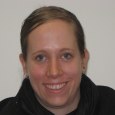Editor's note: this post is by Jim Spohrer, director, IBM University Programs Worldwide and originally appeared on the IBM Research News blog.
Working with academia has been a longtime passion of mine, and for the last three years, my full-time job at IBM. In this role, I am often asked to offer advice, from an industry vantage point, on what needs to change in order to improve university and college education.
After much thought and discussion with academics and industry practitioners, I have distilled my advice to four points:
1. Help students be transdisciplinary. Knowledge workers today need a combination of skills that span technology, business, and social sciences. This requires those three distinct parts of a university to work together.
Transdisciplinarity is not just working with someone who is expert in another area (interdisciplinary). In a paper I wrote with the University of Phoenix and the Institute of the Future, we defined this for students as “being equipped to think through different disciplinary approaches, themselves.” You can read the paper, here.
2. Students should work on real-world challenges. Design capstoneand other team-oriented projects that require students of engineering, business, social sciences, humanities, and other subjects to work together on something that solves a real problem.
For example, we have held social media project competitions with the Hult International Business School that have led to important real-worldexperiences for the MBA students – and valuable insights on the students’ impressions and social media experiences on the IBM sites and blogs.
The students gave recommendations, such as developing clearer linkage and integration between all social media channels in a more holistic approach to social media, and implementing promotions like a social media-based IBM teen entrepreneur competition.
They also came up with fascinating ways to integrate IBM’s social media presence in new ways, such as using gamification, and guerilla marketing technqiues; creating an external IBM product support forum through Facebook; and encouraging employees to evangelize the brand messages.
The winning teams will be announced on the IBM Smarter Planet blog, the IBM People for a Smarter Planet Facebook page, and the IBM profile onLinkedIn next week.
And we also started the SmartPitch Challenge at the City University of New York (now in its tenth year!) The project challenges students to start their own businesses. Winning student teams are mentored by IBMers and public sector representatives. This year’s SmartPitch is already underway, but you can read about past finalists such as CashIn and Cosiety, here.
3. Find better ways to encourage faculty to reach across these disciplines. Today’s rewards (tenure, grants, and increased salaries) are optimized in the other direction. But institutions with discipline-oriented departments that seek rigor and ensure depth, combined with research centers that tackle real-world challenges can provide ample opportunities to motivate faculty.
IBM currently works with universities such as the San Jose State College of Business’s Gary J. Sbona Honors Program on student “final projects,”where IBMers are assigned as business mentors in a real IBM project.Some of these projects have included working on IBM acquisition integration.
In an example from 2010, San Jose State University Computer Sciencestudents are working with IBM Research – Almaden on a project calledSPLASH (Smarter Planet Platform for Analysis and Simulation of Health).
4. Provide faculty and students more opportunities to connect locally and globally. Every student needs the experience of partnering with local businesses, government, and nonprofits to improve regional innovation ecosystems and quality of life. And they also need the experience of a semester abroad to be more-informed global citizens.
4. Provide faculty and students more opportunities to connect locally and globally. Every student needs the experience of partnering with local businesses, government, and nonprofits to improve regional innovation ecosystems and quality of life. And they also need the experience of a semester abroad to be more-informed global citizens.
The increased flexibility in the university curricula is giving the students more opportunities to take international courses, and enhance their personal and professional development by exploring new cultures. And now, IBM has a recruiting initiative called International Student, that's targeting the students who are studying abroad, and identifying opportunities for them in their home countries.
At IBM, our vision is that individuals and institutions are on a journey of increasing capabilities – and creating college graduates who are transdisciplinary problem solvers, and informed global citizens. Let’s reward faculty and students for depth and breadth of knowledge.















